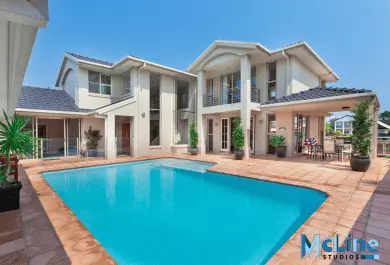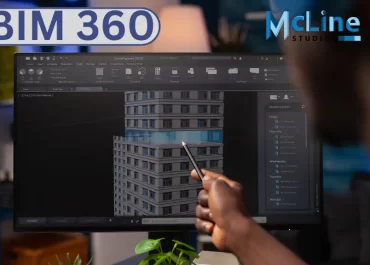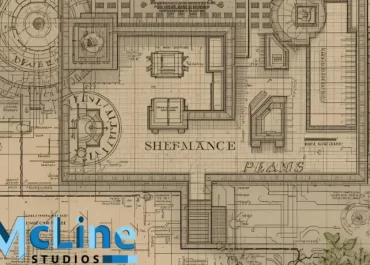In real estate, first impressions are everything. Potential buyers and investors are captivated by visually stunning properties that allow them to envision their dream space. This is where real estate rendering comes into play, changing the way properties are marketed and sold.
With real estate rendering, builders and real estate agents can showcase properties in their intended finished state, allowing clients to experience the space before a single brick is laid. This not only enhances the marketing appeal but also streamlines the decision-making process for buyers, reducing the risk of misunderstandings or disappointments.
In today’s article, we will learn more about real estate rendering, its process, and its benefits for real estate agents and builders.
What Is Real Estate Rendering?
Real estate rendering is the process of creating digital images or animations of architectural designs, interior spaces, or landscapes before they are built. It can range from simple 2D-floor plans to highly detailed 3D visualizations that accurately represent the look and feel of the final project.
They can include elements such as lighting, textures, furniture, landscaping, and even people to create a realistic depiction of the proposed property or development. 3Ds Max, AutoCAD, Trimble’s SketchUp, and Blender are the rendering software used to develop these digital representations.
Process Of Creating Real Estate Rendering

The process of creating the stunning real estate rendering starts with the following steps
- Gathering Information: Understand the project requirements, including the type of property, its purpose (residential, commercial, etc.), architectural plans, interior design concepts, landscaping details, and any other specifications.
- Modeling: Using computer-aided design (CAD) software like AutoCAD or Revit, create a 3D model of the property based on the architectural plans. This involves building the structure, adding details such as doors, windows, fixtures, and furniture, and creating the surrounding environment.
- Texturing: Apply textures to the 3D model to give it realistic surfaces. This includes materials like wood, glass, concrete, and fabric. Texturing also involves adding colors, patterns, and finishes to different elements of the property.
- Lighting: Set up lighting within the 3D scene to create the desired ambiance and atmosphere. This involves placing light sources such as lamps, ceiling lights, and natural sunlight, as well as adjusting parameters like intensity, color temperature, and shadows.
- Rendering: Use rendering software such as V-Ray, Corona Renderer, or Blender Cycles to generate high-quality images of the 3D scene. Rendering involves calculating the interaction of light with the materials and surfaces in the scene to produce realistic results. This process can be computationally intensive and may require significant time depending on the complexity of the scene and the desired level of detail.
- Post-Processing: After rendering, further enhance the images using image editing software like Adobe Photoshop. This may involve adjusting colors, contrast, and brightness, adding effects like lens flares or glare, and retouching any imperfections.
- Presentation: Finally, compile the rendered images into a presentation format to showcase the property to clients, investors, or potential buyers.
Advantages Of Real Estate Rendering
Real estate rendering, which involves creating photorealistic 3D visualizations and images of properties, offers several advantages:
- Pre-construction visualization: Rendering allows builders, architects, and real estate professionals to showcase properties that are still in the planning or construction phase. This helps potential buyers visualize the final product before it’s built, making it easier to market and sell off-plan.
- Highlight features: Renderings can be used to highlight specific features or amenities of a property, such as landscaping, interior designs, or architectural details. This helps buyers better understand the property’s potential and unique selling points.
- Virtual tours: Renderings can be combined with virtual reality (VR) technology to create immersive virtual tours of properties. This allows potential buyers to explore properties from anywhere in the world, improving accessibility and convenience.
- Cost and time savings: Creating physical models or staging actual properties can be expensive and time-consuming. Renderings provide a cost-effective alternative, allowing professionals to experiment with different designs and make changes efficiently.
- Design and planning: Renderings can be invaluable tools for architects, designers, and developers during the planning and design phases of a project. They can help identify potential issues, experiment with different layouts, and ensure the final product meets the desired vision.
Where To Find The Best Real Estate Rendering Services?
Real estate rendering services are in high demand as they are crucial in bringing architectural designs to life. These services involve creating realistic 3D visualizations of properties, allowing potential buyers, investors, and developers to comprehensively understand the project before it’s even built.
When searching for the best real estate rendering services, it’s essential to consider factors such as the company’s portfolio, expertise, turnaround time, and pricing. It is recommended to look for a provider that has a proven track record of delivering high-quality, photorealistic renderings that accurately represent the intended design.
This is where McLine Studios excels. With a team of skilled artists and cutting-edge technology, McLine Studios has consistently delivered stunning visualizations that exceed client expectations. Contact us today to learn more about our real estate rendering services.




